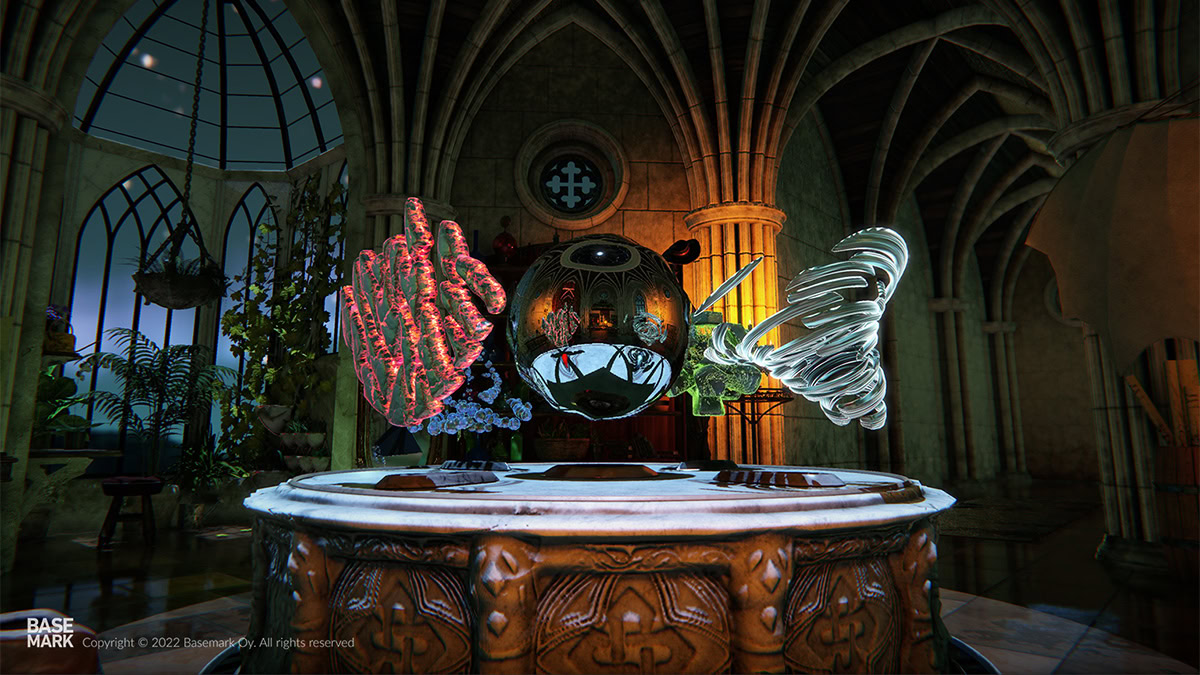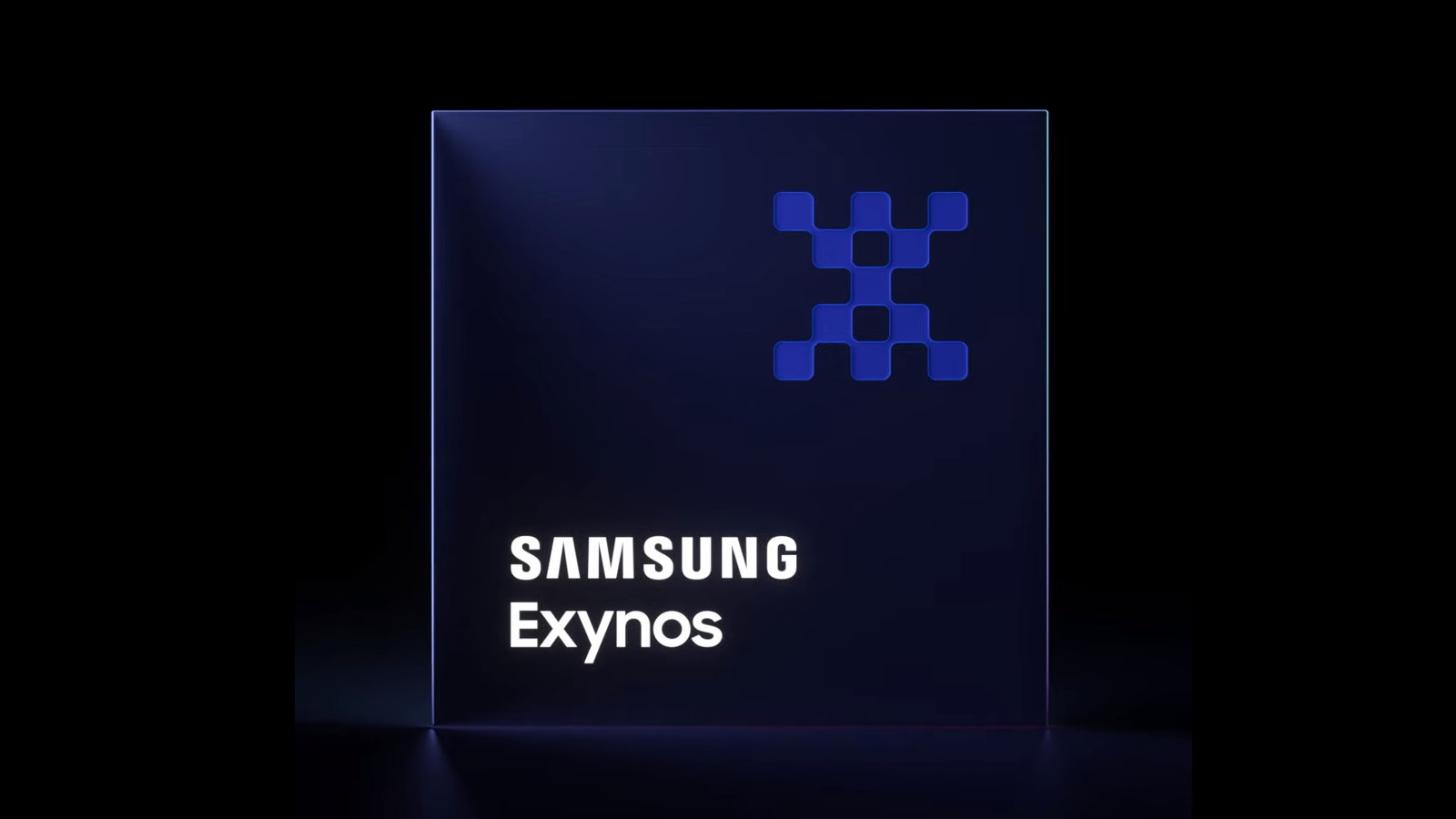Affiliate links on Android Authority may earn us a commission. Learn more.
Exynos beats the Snapdragon for ray tracing performance
Published onJanuary 16, 2023
Smartphone ray tracing is in its early stages, but with supported silicon expected to be onboard virtually all 2023 flagship smartphones, it’s soon to be a notable factor when gauging high-end performance. Especially for those who are into the latest and greatest mobile games.
Although benchmarks are never perfect, they’re a useful tool for judging comparative performance. Basemark has just such a tool in its new In Vitro GPU test suite and kindly provided a copy to Android Authority. We’ve grabbed a couple of ray-tracing-capable phones to see what they can do.
What does In Vitro test?

Before we dive into the results, it’s important to note what In Vitro does and doesn’t tell us about the performance it measures. Basemark’s benchmark is designed with 3D content that resembles a highly demanding mobile game, focusing on lighting, models, and details, rather than animations or open-world rendering.
As for rendering, In Vitro uses ray tracing exclusively to improve the quality of reflections. Other scene elements, such as lighting and shadows, use traditional rendering (rasterization). So while this benchmark gives us a good look at a hybrid rendering workload that will likely be employed in upcoming mobile titles, it doesn’t give us the full picture of how a phone’s GPU would handle combined ray tracing for lighting, shadows, and reflections.
Basemark's In Vitro is the first smartphone ray tracing benchmark.
In Vitro provides a selection of test options. “Official” produces the most comparable results, always rendering at 1080p to remove device resolution from the equation. The “Official Native” runs the test at full resolution, should you want to see how the device’s display affects performance. There are also Custom and Experience Mode options. To run the benchmark, devices must support hardware ray tracing, Android 12 or later, Vulkan 1.1 or newer, ETC2 compression, and have at least 3GB of unified memory. This rules out 2022 smartphones powered by the Snapdragon 8 Gen 1 series or Dimensity 9000, as they lack ray tracing capabilities.
For our test, we used the Official setting and a custom pass to run the same test 20 times in a row to gauge longer session performance.
Smartphone ray tracing benchmarks
There are only two mobile SoCs currently available to Western audiences that support the necessary ray tracing hardware and Vulkan API to run In Vitro — the Samsung Exynos 2200 and Qualcomm Snapdragon 8 Gen 2. MediaTek’s Dimensity 9200 also sports ray tracing courtesy of Arm’s Mali-G715 Immortalis GPU, but we’re waiting for the chip to make an appearance outside of China.
Despite seemingly supporting the same technology, Exynos and Snapdragon accomplish this using different hardware. Samsung partnered with graphics giant AMD to bring its RDNA 2 architecture to the Xclipse 920 GPU found in the Exynos 2200. Meanwhile, Qualcomm has added ray racing capabilities to its in-house Adreno 740 GPU.
To put these two to the test, we installed In Vitro on the Samsung Galaxy S22 Ultra and Redmagic Pro 8. The latter was running Chinese software (a global launch happened in mid-January) but presented no problems installing and running the benchmark. Let’s get to the results.
Perhaps unexpectedly, the older Exynos 2200 hands in superior average performance in Basemark’s smartphone ray tracing benchmark than the newer Snapdragon 8 Gen 2. That said, the 8 Gen 2 is able to hit higher peak FPS but also suffers from lower lows. Watching the benchmark in real-time, it’s clear that the Snapdragon 8 Gen runs faster with fewer reflections on screen and really struggles as the benchmark ramps up the reflections near the end.
Snapdragon wins at traditional rasterization but falls behind Exynos in ray tracing scenes.
Just to be sure, we ran the benchmark multiple times using the various Redmagic performance and fan modes and achieved the same results each time. There isn’t a performance issue with the phone, as far as we can tell, the Redmagic 8 Pro flies past the S22 Ultra in most other benchmarks we ran. The Redmagic 8 Pro is also running a newer version of the Vulkan API than the Galaxy, 1.3.128 and 1.1.179 respectively, so software support isn’t the issue. Vulkan introduced ray tracing support in version 1.1. We also confirmed our results with Basemark’s internal testing.
It genuinely looks like the Snapdragon 8 Gen 2 is inferior when it comes to ray tracing capabilities. At least in this benchmark.
To complete our first ray tracing benchmarking sessions, we ran both phones through a 20-run stress test. We left Redmagic 8 Pro’s fan off here to even the playing field. As we already know, the Exynos 2200 gives up performance even in just a short test. That said, it survived a decent 17 runs before folding in half. We saw almost a 14% decline in performance after 5 runs, a 26% drop by run 15, and a 54% flatline come to the end of the test.
Despite its worse performance in absolute terms, Qualcomm’s Snapdragon 8 Gen 2 is more consistent. Still, its performance noticeably wobbled a little earlier than the Exynos chip. We observed a worrying 20% deviation between peak and worst performance in the first five runs. The chip ends up settling at that lower performance level by run 10, which is not as bad as Samsung’s chip in percentage terms.
Both SoCs struggle to maintain peak performance in a ray tracing stress test.
Clearly, stress testing is a demanding workload that neither chip handles brilliantly. Qualcomm wins out in long-term consistency, but Samsung’s chip still retained a healthy real performance lead until the last two runs of our stress test.
For completeness, you can find our full benchmark results for the Snapdragon 8 Gen 2-powered Redmagic 8 Pro below (max performance). In a nutshell, Geekbench 5 and 3DMark are right around what we saw from the Qualcomm reference unit benchmarks. However, PCMark scores closer to the Snapdragon 8 Gen 1, suggesting that day-to-day performance might not feel all that different.
Exynos bests Snapdragon at ray tracing, for now
While these results might appear shocking at first glance, they’re not entirely unexpected. As we highlighted during 2022’s numerous ray tracing announcements, there are various intricacies in ray tracing hardware that affect both feature capabilities and performance. Even if a GPU is faster at traditional rasterization, it doesn’t necessarily translate into better ray tracing performance, as observed here.
Qualcomm is starting from scratch with its ray tracing efforts and keeps most of its Adreno GPU details a closely guarded secret. What we do know is that it accelerates ray-box and ray-triangle intersections, complete with Bounding Volume Hierarchical (BVH) acceleration. But Qualcomm declined to comment on exactly how it set up its latest Adreno GPU cores and how deep ray tracing integration goes. The GPU is clearly a powerhouse for traditional rendering but may have comparatively trimmed-down ray tracing capabilities.
Unique dedicated ray tracing hardware makes it harder than ever to compare mobile GPUs.
Meanwhile, Samsung leveraged the expertise of AMD and its RDNA 2 architecture, found in its PC graphics cards and games consoles, for the Xclipse 920 GPU. We know that RDNA 2 handles intersections and BVH in each compute unit. We aren’t 100% sure of the fine details, but die shots indicate three dual-shader cores onboard, for a total of six ray tracing crunching units. It might end up being a bit of a shame that all of Samsung’s Galaxy S23 phones look to be Snapdragon-powered this year, as it would be interesting to see how a second-generation Xclipse GPU shakes out.
That’s all rather speculative though, so we won’t dwell on it. Likewise, it’s entirely possible that ray tracing performance may improve on either or both handsets with future driver updates, and that rival phones may perform better. We also don’t yet have any reference yet for how In Vitro compares to real-world game performance, the first of which should be landing on the market early this year. Mobile ray tracing is still in its infancy, after all, and much of this might not matter much if popular titles don’t embrace ray tracing for many more years.
